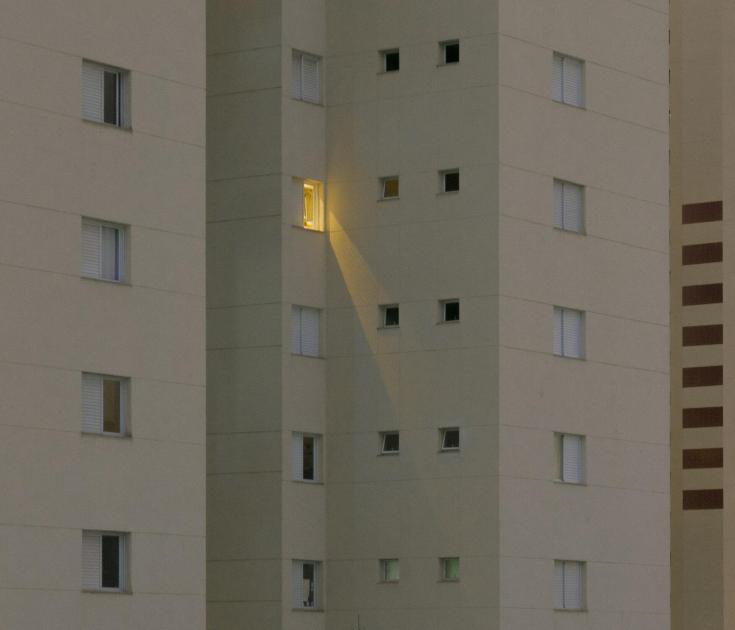Webinar recording on energy performance in social housing

On 28 September, the Policy Learning Platform hosted a webinar on the topic of energy poverty in social housing. Regions face many challenges in relation to social housing, which serves the needs of low-income and vulnerable residents and is often (though not always) under public ownership. Much of Europe’s social housing remains thermally inefficient, having been built before modern building standards, leaving inhabitants at risk of energy poverty, and contributing to Europe’s carbon emissions.
During the webinar, policymakers learned about three approaches for improving energy efficiency in social housing – a behaviour change campaign, a funding scheme for renovation of existing housing, and sustainability criteria for new buildings – followed by a panel discussion. Watch the webinar recording below.
Webinar recording
Webinar agenda overview
00:05:30 Presentation by Ryan Weber on the challenges for social housing
00:22:54 Q&A: In the examples of the financial instruments such as KREDEX, does the owner of the property also have access to the energy savings?
00:26:30 Presentation by Florian Guillotte on the good practice: Challenge positive energy families.
00:38:16 Q&A: Did you see any challenges associated with the social households or people living in energy poverty in regards to upfront investment? Did you see any aspects of lack of motivation?
00:42:00 Presentation by Andreea Rogozea on combatting energy poverty in housing units with vulnerable residents.
00:49:22 Q&A: Were the houses, that you selected for the project, pre-identified or was there an interest from the local population?
00:50:59 Q&A: Can you see this programme expanding to other areas and blocks of flats?
00:53:04 Presentation by Rosalia Smaldone on the approach for sustainable public housing
01:07:50 Q&A: Are there any recent legal changes in Italy that promote energy efficiency investments or renewable investments in homes?
Panel discussion
01:11:27 Q&A: What would you consider best practice for identifying those in energy poverty?
01:16:40 Q&A: What can be done to build trust between residents and public authorities?
Key learnings
The webinar revealed the following key learnings:
- Improving the energy performance of social housing is not only about energy improvement, but also enhancing quality of life, with subsequent improvements in health, comfort, happiness, wellbeing and social cohesion;
- It remains a challenge to identify energy poverty, as not all cases are evident. Households in need of intervention can be identified by talking with housing associations, seeing where energy bill subsidies are requested, and discussing with social workers and organisations;
- The scale of the renovation challenge is enormous, as recognised by the European Renovation Wave initiative. Public funding alone will not be enough and new approaches need to be found to leverage private investment, requiring the creation of new financial instruments with public funds (including European funds) covering part of the risk to stimulate investment;
- In many cases, those in energy poverty are dependent on subsidies to support their energy bills. Renovation can therefore have a long-term net benefit to the public budget, as in the Romanian case where investment costs were returned in only 5.4 years as a result of savings made from no longer paying subsidies;
- As well as renovations, energy savings can be made via behaviour change, such as turning off lights and using technologies efficiently. Campaigns and training can help in raising awareness of the potentials, with communal approaches that also build up social bonds (such as competitions and group tasks) being particularly beneficial, as demonstrated in the Energy Families challenge;
- When renovations are made, active engagement with residents is vital, ensuring they are aware of works and are fully informed of upcoming disruption. The eventual benefits – cheaper bills and greater comfort – should be explained so that the reasons for change are clear;
- For new builds, energy performance must be considered from the outset. Using the most energy efficient technologies may be more expensive overall than typical approaches, but costs must be compared against the overall energy savings and increased comfort. It should not be only a numbers game.
Further Reading
- For more information from the Policy Learning Platform, you can see the Policy Briefs on
,DocumentandDocument.Document
- The Building Performance Institute of Europe provides a number of resources, including A Guidebook to European Building Policy, Energy Services and the Renovation Wave, and Financing the future of buildings in Central, Eastern and South-East Europe.
- As part of the Energy Performance of Buildings Directive, all EU member states are required to develop long-term renovation strategies. The available strategies are accessible here.